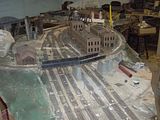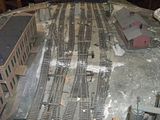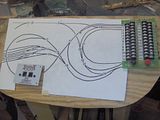The OP is concerned with space.
The snap will yeild a more condensed yard,but the other posts are correct that the curve is sharper.
Many references have been made to Atlas #4 switches “really” being 4.5. I think this refers to the custom line or “CL” “mark” series.
The OP also states “remote”. The snap is available as a packaged set,with the twin coil switch machine and an actuator button. I’m 95% sure you have to buy these seperately with CL. (BTW, I have several pics of prototype switch machines that look very simillar to the Atlas unit.)
I have a 27 car capacity 5 track yard full of snaps,and only my BLI J1 2-10-4 and T1 4-4-4-4 have difficulty. All my smaller locos are fine except a Genesis 2-8-2 which shorted because of wheel guage issues, and an MDC 2-8-0 running backwards which climbed the rail.
My main fleet is BLI 2-8-2s (some converted to 2-8-0s),2-10-0s, and 4-8-2s.
The 2-10-0s and 4-8-2s need to go slow, but can make it. Even backing. Kinda like real life. These are road engines,and shouldn’t be spending much time in yards anyway.That’s why they had switch engines.
0-6-0,0-8-0,diesels and even 2-8-8-2s sail through.
Sidings and crossovers on the main are Atlas Super Switch #6.
BTW,be carefull on price.Lots of folks want $12-14 or more for the snap remote package, but shop around and they can be had for $8-10.This starts to matter if you need 10 or more.
I actually did build this yard both ways (using CL #4 and using snap). With the CL,the track spacing is narrower, yielding a shallower yard from edge of shelf to wall, with snap, the clearance point is closer to the frog, yielding more usable yard track length, hence a shorter yard. I’ve also sucessfully cut about an inch from the straight leg,and 3/4 inch from the point leg to reduce tr


